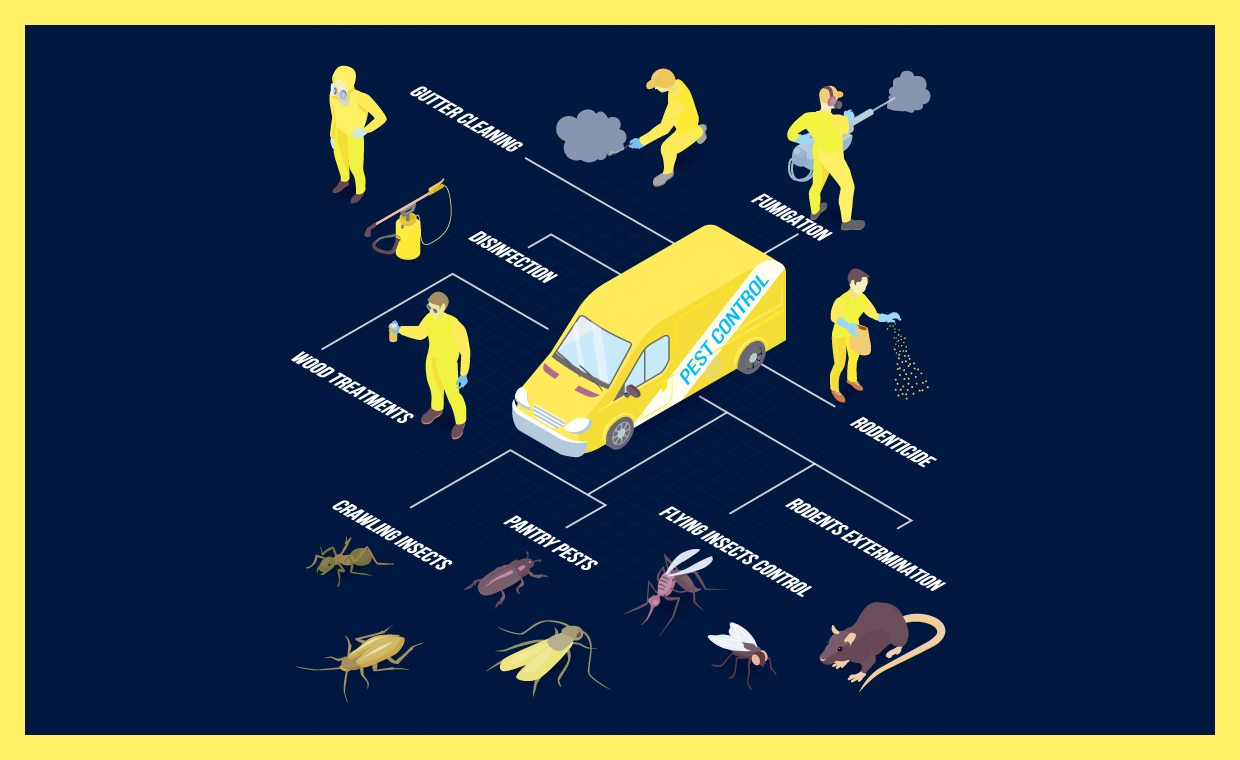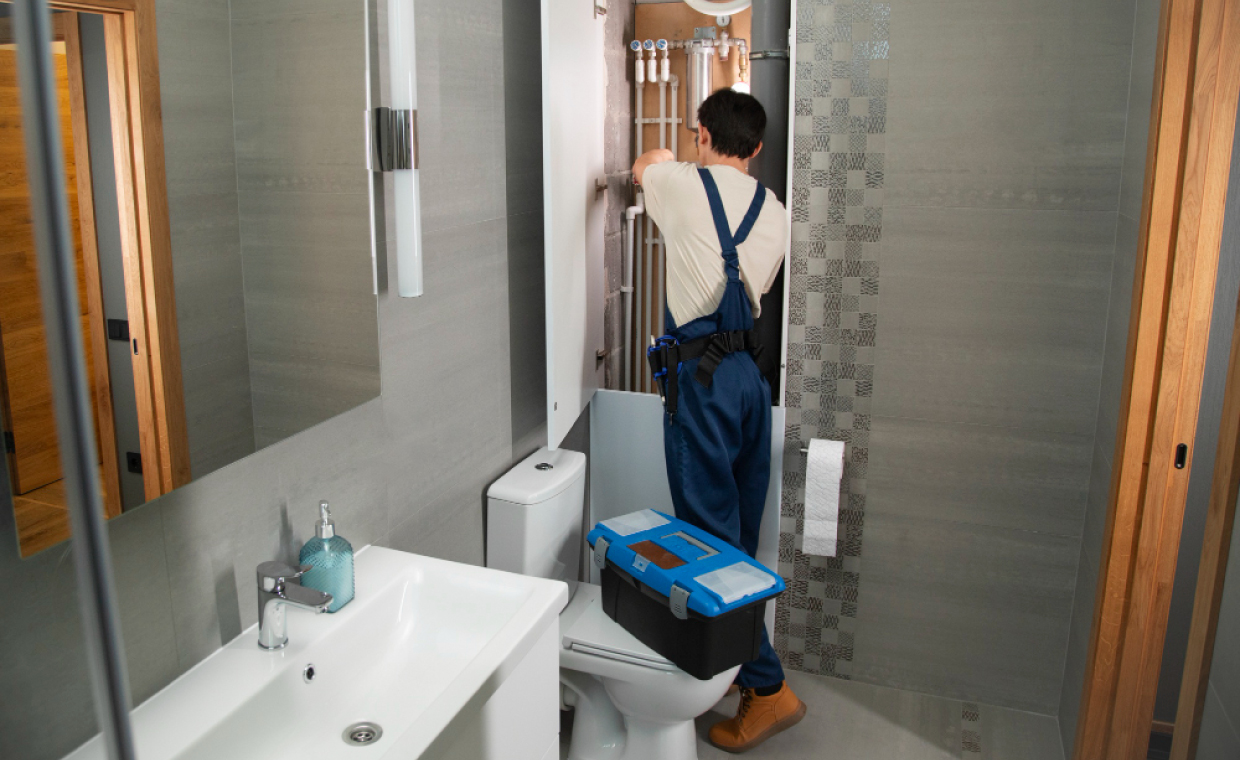
Table of Contents
Living in a high-rise building may offer spectacular views and convenient urban access, but it doesn’t make you immune to pest problems. In fact, tall buildings can often harbour persistent infestations due to their unique structures and shared environments. Let’s uncover the six most common pests found in high-rise residences and how to stop them effectively.
Why High-Rises Are Prime Pest Havens

Warmth, food & shelter – structural benefits
High-rise buildings are warm year-round and filled with food sources, making them ideal for pests. Crumbs, trash chutes, and pantry items create a constant buffet, while wall cavities and appliances offer protected shelter.
Easy pest travel between floors – plumbing, vents, walls
Pests move with surprising ease between units. Plumbing lines, vents, elevator shafts, and wall voids act like highways for insects and rodents, letting them travel vertically throughout a building.
Shared spaces & human activity amplify risk
Common areas like lobbies, gyms, laundry rooms, and rubbish disposal zones increase pest exposure. The more humans interact and move, the more likely pests are introduced or spread between floors.
1. Rodents (Rats & Mice)
How rodents access upper floors
Rodents are agile climbers, using pipes, electrical wiring, and wall cavities to scale buildings. Even a high floor doesn’t guarantee safety from these determined invaders.
Risks-health hazards and wire damage
Rodents chew through wires, insulation, and plastic, causing fire hazards and expensive repairs. Worse, they carry pathogens that spread diseases like salmonella and hantavirus.
Prevention tips: sealing cracks, secure bins, traps
Seal entry points around baseboards, doors, and pipe entries. Keep trash bins sealed tightly and use snap traps in hidden areas. Professional Pest Control Lexington services can provide tailored rodent prevention plans for multi-level dwellings.
2. Cockroaches (German & American)
Why cockroaches thrive in high-rises
Cockroaches are nocturnal and multiply rapidly, especially in dark, warm, and moist places like kitchens and bathrooms. Leaks and food scraps help them thrive unnoticed for long periods.
Health risks-from allergens to food contamination
Cockroach droppings trigger allergies and asthma, especially in children. They also contaminate food with bacteria like E. coli and salmonella.
Control strategies: sanitation, bait stations, regular inspections
Clean food spills immediately, fix leaky pipes, and install bait traps under sinks and behind appliances. Schedule routine inspections to detect issues early.
3. Ants (Including Pharaoh and Carpenter Ants)
Trail-finding and colony expansion in apartments
Ants are experts at scouting food, leaving scent trails for the colony to follow. Once inside, they may nest in walls or under floors, multiplying quickly.
Potential damage and food contamination
Carpenter ants burrow into wood, weakening the structure. Pharaoh ants, common in high-rises, contaminate food and can transmit bacteria.
Prevention: food storage, baiting, gap sealing
Store food in airtight containers, clean up sugary spills, and seal cracks in windows, walls, and floors. Bait stations help target colonies at the source.
4. Spiders & Other Arachnids
Entry points and typical hiding spots
Spiders crawl in through open windows, air vents, and cracks. They hide in cluttered corners, ceilings, and behind furniture-often unnoticed until webs appear.
Distinguishing venomous from harmless species
Most spiders are harmless, but species like the black widow and brown recluse can pose risks. Learn to identify them, especially in storage areas.
Control: reducing insect food sources, web clearing
Since spiders feed on other insects, controlling overall pest presence reduces their numbers. Regularly remove webs and vacuum dark corners.
5. Bed Bugs
Hitchhikers in luggage, furniture, electrical outlets
Bed bugs are notorious for catching a ride in luggage, second-hand furniture, or even through electrical outlets from neighbouring units.
Signs of infestation-bites, mattress stains
Watch for itchy bites in a straight line, rust-coloured stains on sheets, and a musty odour near your bed.
Elimination methods: professional treatment, mattress encasements
DIY sprays rarely work. Use certified pest control specialists, encase your mattress, and avoid used furniture to stop the cycle.
6. Termites
How termites reach high-rise levels via structure
While traditionally ground-dwellers, termites reach upper floors by moving through structural wood, elevator shafts, and expansion joints.
Common damag-wood, drywall, furniture
They silently destroy wooden beams, baseboards, and drywall-causing expensive structural damage.
Prevention & treatment: inspections, bait systems, wood treatment
Routine termite inspections and early bait station installations are crucial. Wood treatments and sealing exposed areas offer long-term protection.
Pest Management Tips for High-Rise Residents
Regular inspections by certified experts
Schedule yearly or bi-annual checks, even if pests aren’t visible. Hidden infestations can go undetected for months.
Integrated Pest Management (IPM) approach
IPM combines prevention, monitoring, and targeted treatments, reducing the need for harsh chemicals and offering sustainable long-term results.
Community-wide strategies for shared spaces and bins
Work with building management to keep trash areas clean, ensure proper ventilation, and coordinate treatments across all floors.
Also Read: Effective Wasp Removal How Professional Pest Control Keeps Your Property Safe






























